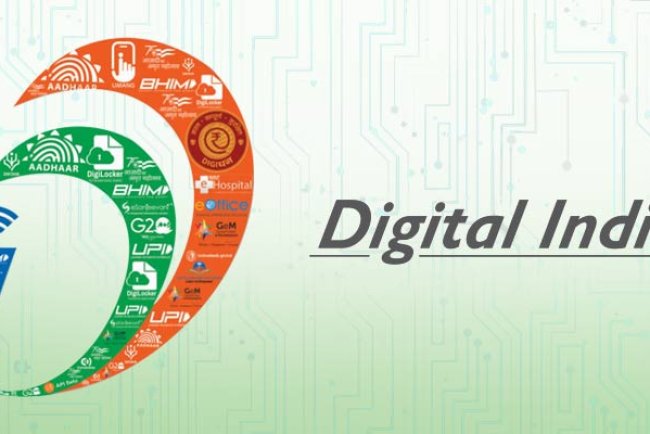How Accounts Receivable Works in SAP: A Step-by-Step Guide
SAP Accounts Receivable (AR) is a crucial part of the Financial Accounting (FI) module that helps manage customer transactions like invoicing, payment tracking, credit memos, and payment reminders. This step-by-step guide explains key T-Codes and processes such as creating customer master data (FD01), posting invoices (FB70), recording payments (F-28), and running reports (FBL5N). Learning SAP AR is valuable for finance students and professionals, offering career opportunities in roles like SAP FICO Consultant, Corporate Accountant, and Financial Analyst. Training is available through certified accounting courses, online programs, and institutes across India.

In today’s digital economy, efficient customer payment tracking is crucial for smooth financial operations. SAP, a globally recognized ERP platform, offers a comprehensive solution through its Accounts Receivable (AR) module. This guide breaks down the AR process in SAP step-by-step—perfect for students and professionals in financial and corporate accounting or those pursuing certification in industrial accounting.
What is Accounts Receivable in SAP?
Accounts Receivable (AR) is a key component of SAP's Financial Accounting (FI) module. It focuses on managing customer-related financial transactions, including:
-
Generating customer invoices
-
Recording customer payments
-
Issuing refunds or credit notes
-
Sending automated payment reminders
This module plays a pivotal role in ensuring timely collections, maintaining liquidity, and improving overall cash flow management.
Step-by-Step Process of SAP Accounts Receivable
1. Create Customer Master Data
Before initiating any transaction, it's essential to set up a customer profile in SAP with details such as customer name, address, payment conditions, and contact info.
T-Code: FD01 – Create Customer Master
This foundational step helps streamline future transactions and ensures accurate record-keeping.
2. Post a Customer Invoice
After delivering products or services, businesses must create an invoice to acknowledge the amount owed by the customer.
T-Code: FB70 – Post Customer Invoice
This is a basic yet critical function, emphasized in many accounting training programs and certification courses.
3. Record Incoming Payments
When a customer makes a payment, it must be logged in SAP to reconcile and close the outstanding invoice.
T-Code: F-28 – Record Incoming Payment
Accurate payment recording ensures real-time updates to accounts and aids in better financial forecasting.
4. Post a Credit Memo
If products are returned or a discount is applied, a credit memo is issued to adjust the invoice accordingly.
T-Code: FB75 – Post Credit Memo
Credit memos are an integral part of both general and tax accounting practices.
5. Send Payment Reminders (Dunning)
If payments are delayed, SAP’s Dunning functionality allows the company to send automated reminders at predefined intervals.
T-Code: F150 – Dunning Run
This is a must-know feature for those pursuing accounting, taxation, or finance courses.
6. Generate Customer Reports
SAP provides detailed reports on customer balances, overdue items, and transaction history to assist with financial planning and analysis.
Key T-Codes:
-
S_ALR_87012168– Customer Balance Overview -
FBL5N– Customer Line Item Display
These reports support audit readiness and ensure accuracy in financial reporting.
Why Learn SAP Accounts Receivable?
Mastering SAP AR can significantly boost your career prospects in finance and accounting. It equips you with hands-on skills valued across multiple industries. Professionals trained in SAP FI/AR are well-suited for roles such as:
-
Corporate Accountant
-
Certified Industrial Accountant
-
Accounts Receivable Specialist
Courses That Cover SAP Accounts Receivable
If you're looking to upskill in this domain, here are some top programs:
-
Certified Corporate Accountant: Includes training in SAP, Tally, GST, and TDS.
-
Short-Term Accounting Programs: Tailored for students and working professionals.
-
Taxation & Accounting Courses: Combines SAP with modules on GST, income tax, and e-filing.
-
Online Accounting Courses with Certificates: Learn SAP FICO at your convenience.
-
Free Online Courses in India: Ideal for beginners seeking entry-level knowledge without upfront costs.
You can search for "accounting classes near me" or explore top online accounting courses in India to begin your SAP journey.
Benefits of Using SAP for AR Management
-
Real-Time Insights: Instantly view customer payment statuses.
-
Efficiency: Automation reduces manual entries and errors.
-
Compliance-Friendly: Integrates with GST, TDS, and other tax modules.
-
Industry Preferred: Adopted by sectors like retail, FMCG, manufacturing, and IT services.
Career Opportunities After Learning SAP AR
Professionals skilled in SAP AR are in demand for roles such as:
-
Accounting Assistant
-
Accounts Receivable Executive
-
SAP FICO Analyst
-
Financial Analyst
-
Audit Associate
Many multinational companies look for SAP-trained individuals for their finance departments.
Conclusion
Gaining proficiency in SAP Accounts Receivable isn’t just about managing invoices. It encompasses the complete cycle of customer payment processing—from master data creation to cash application, reporting, and dunning.
Whether you're just beginning with a basic accounting course or advancing through a certified corporate accounting program, SAP AR knowledge offers a career advantage. You can enroll in the best accounting institute in Kolkata, explore top taxation courses in India, or even start with SAP FICO training online to build your expertise today.
What's Your Reaction?
















